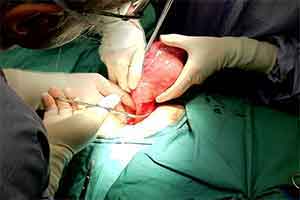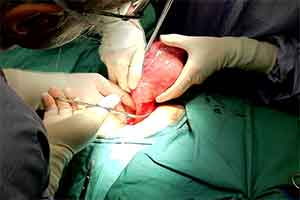Removal of ovaries during hysterectomy linked to increase in heart disease, cancer and premature death

* Study finds link between removal of both ovaries at the time of hysterectomy and premature death
* Increase in incidence of heart disease and cancer, and of deaths from heart disease and cancer when ovaries were removed.
* More than 113,000 hysterectomy cases were studied and the ovaries were removed in about a third of these
A study led by the University of Warwick has found a link between the removal of ovaries during hysterectomy and an increase in heart disease, cancer and premature death.
 The study is the largest of its kind conducted on the subject and covered a ten year period. It compared women who were treated for a benign disease who had both ovaries removed with those who had one or none removed.
The study is the largest of its kind conducted on the subject and covered a ten year period. It compared women who were treated for a benign disease who had both ovaries removed with those who had one or none removed.
The work looked at 113,679 cases of women aged 35-45 during the period April 2004 to March 2014. A third of the patients studied had both ovaries removed. Titled Removal of all ovarian tissue versus conserving ovarian tissue at time of hysterectomy in premenopausal patients with benign disease: study using routine data and data linkage the study has been published in the BMJ.
It found that women who had one or no ovaries removed were less likely to develop ischaemic heart disease (coronary artery disease) or cancer after hysterectomy than those who had both (bilateral) ovaries removed. The researchers also found that fewer women who retained one or both ovaries compared to those who had both removed died within the duration of the study – 0.6% compared to 1.01%.
Although removal of both ovaries protects against subsequent development of ovarian cancer, the researchers believe premenopausal women should be advised that this benefit comes at the cost of an increased risk of cardiovascular disease and of other (more prevalent) cancers and higher overall mortality.
The study was led by Richard Lilford, Professor of Obstetrics and Gynaecology and Chair in Public Health at the University of Warwick’s Warwick Medical School. He said: “The combination of biological plausibility and the massive ‘effect size’ make a compelling case that women can be advised that their risk of ovarian cancer is greatly reduced by surgical removal of both ovaries.
“However, the lifetime risk of developing ovarian cancer is one in 52 in the UK, and the removal of a metabolically active organ such as the ovary may have harmful effects in the long term.
“If so, these long term disadvantages (combined with the unpleasant shorter term effects of acute oestrogen deprivation) must be offset against the benefit conferred by protection from ovarian cancer.”
A national database of hospital admissions was examined by the researchers and linked to the national register of deaths to conduct this nationwide study. Unlike the previous, smaller Nurses’ Health Study, it was conducted on a countrywide basis rather than in a sample, and examined associations between operation type and subsequent hospital admissions, as well as mortality.
Forty per cent of women with no specific risk factors for reproductive cancer had their ovaries removed during abdominal hysterectomy in the 35-45 age group. Professor Lilford said: “This might be a higher proportion than would be expected among women who were fully aware of the worse health outcomes with bilateral removal that we’ve reported. In that case, we might expect the proportion of women who select bilateral ovarian removal to decline as the health risks that must be traded for a reduced incidence of ovarian cancer come into sharper focus.”
Another point of interest the research team found was a decline, albeit a slow one, in the number of hysterectomies performed; nearly 9,000 women had a hysterectomy for a benign condition in the target age range in 2014, compared to almost 13,000 in 2004-05.
The researchers admit the data available wasn’t as detailed as they would have liked, in particular they didn’t have information on the use of hormone replacement therapy. However they plan to re-examine the cohort at a later date to examine trends over the long term.
Source: University of Warwick
Full bibliographic information:
Removal of all ovarian tissue versus conserving ovarian tissue at time of hysterectomy in premenopausal patients with benign disease: study using routine data and data linkage
BMJ 2017; 356

